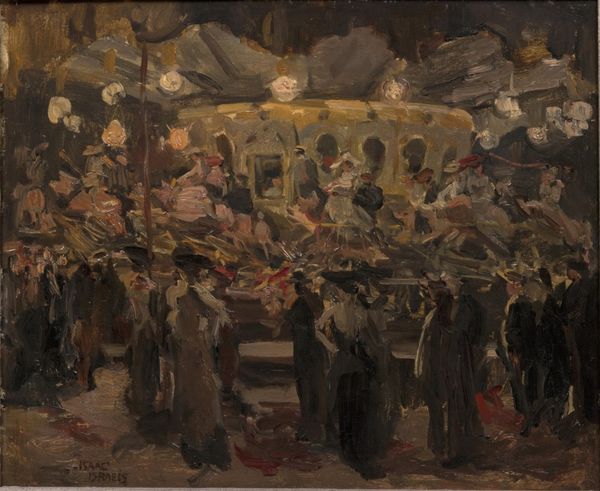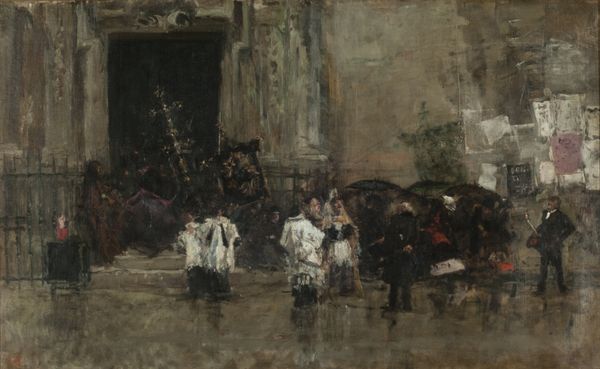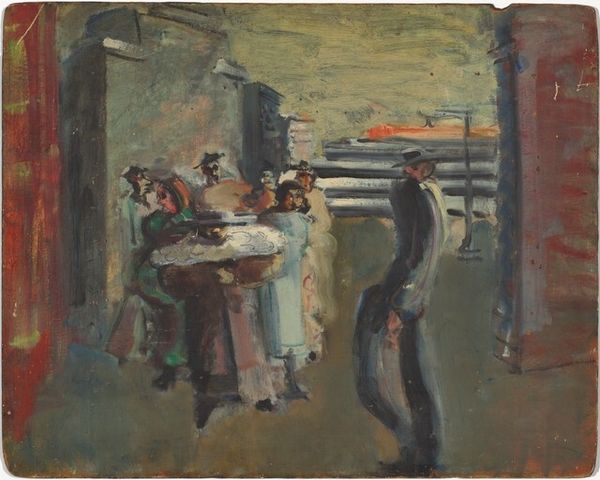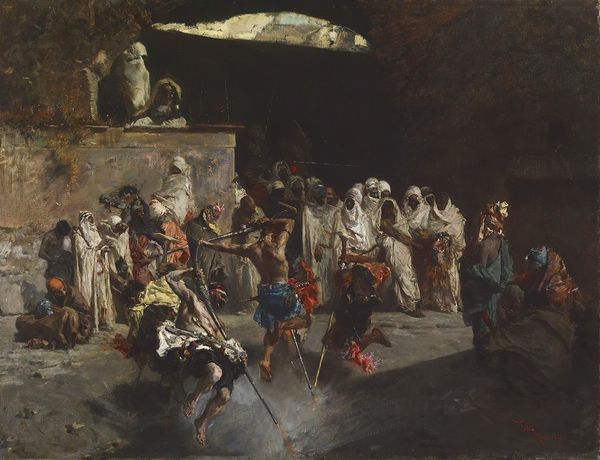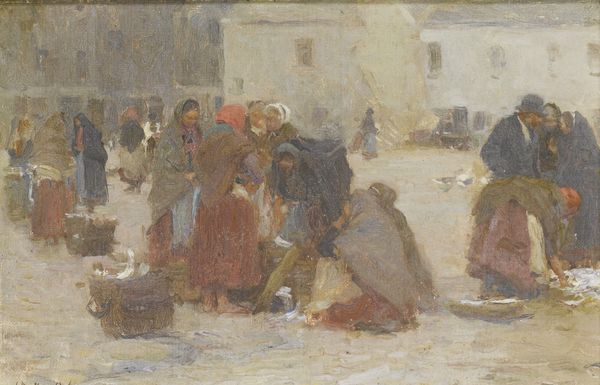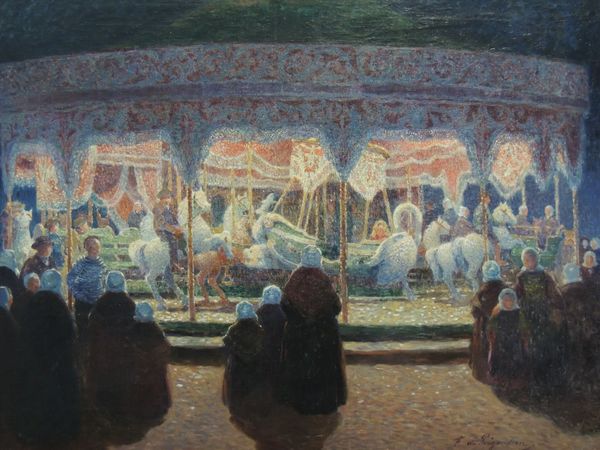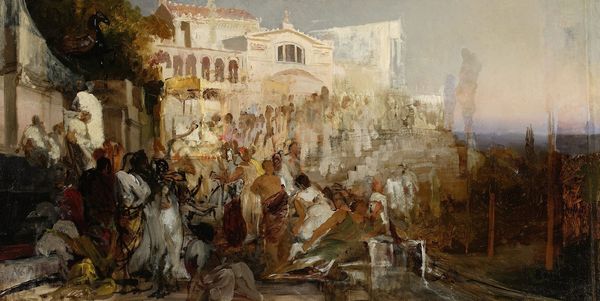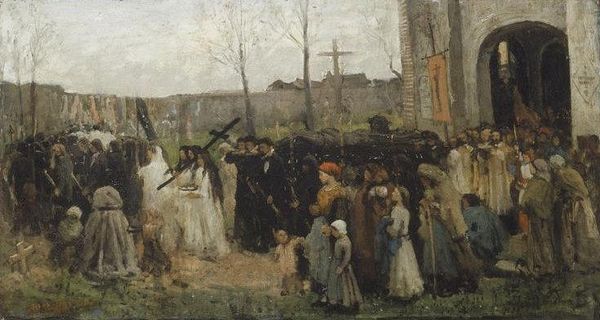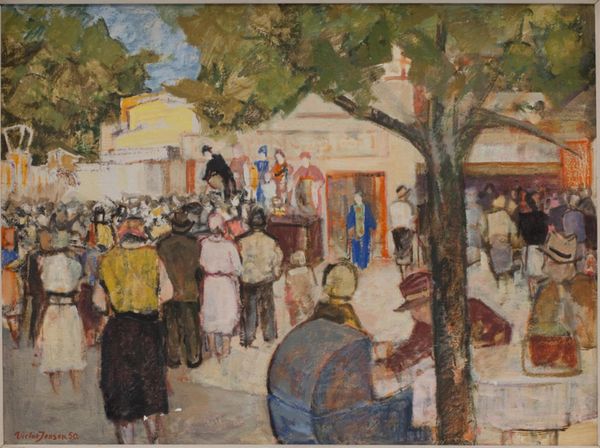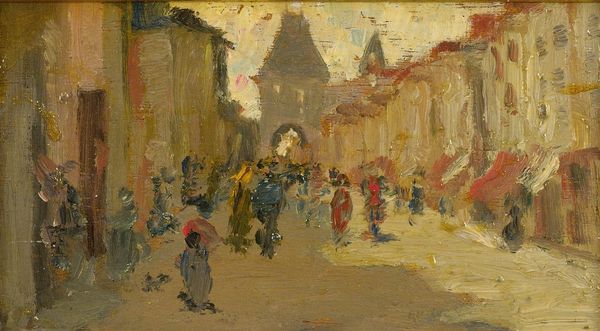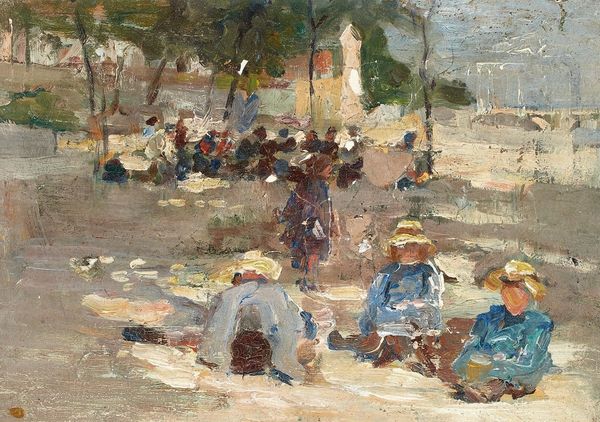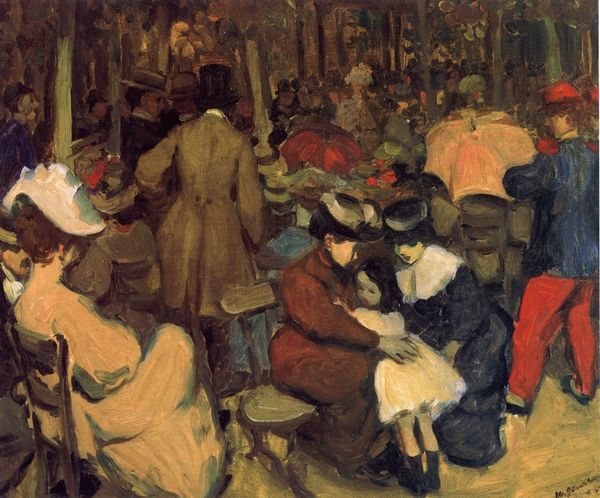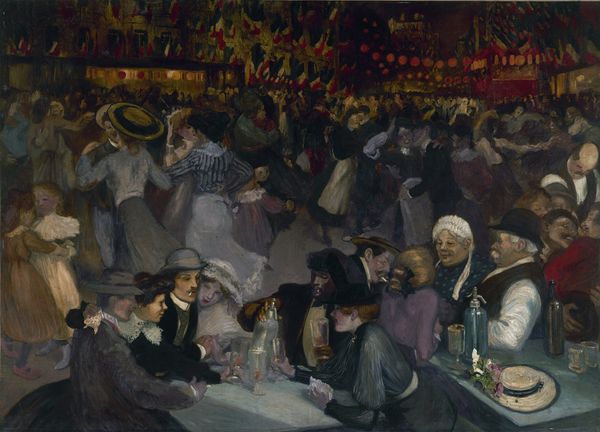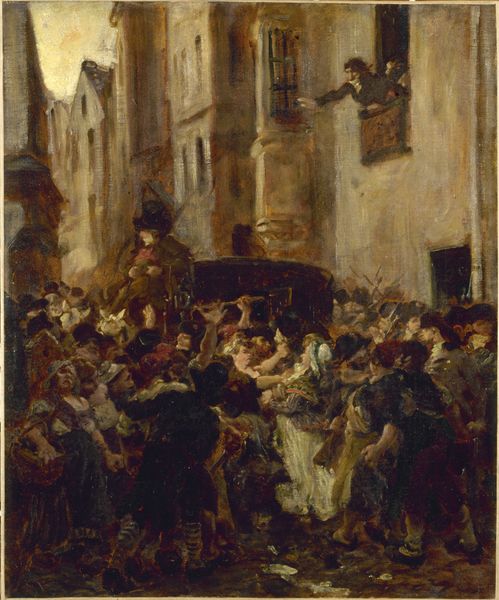
painting, watercolor
#
medieval
#
water colours
#
painting
#
watercolor
#
genre-painting
#
history-painting
Copyright: Public Domain: Artvee
Curator: This work, by Luc-Olivier Merson, is titled "La musique au Moyen Age," painted sometime between 1896 and 1898, executed with watercolors. It presents an imagined scene from the Middle Ages. Editor: It strikes me as very stage-like, almost theatrical. The composition feels quite broad and the paint handling is gestural and washy. It does appear to be more of an idealized rendering of a specific moment. Curator: Absolutely. Merson, working at the turn of the century, wasn't striving for strict historical accuracy, but instead aimed to evoke the spirit of the medieval period, popular during the height of medievalism in European culture. Think about the literature, architecture, and even political ideologies that drew inspiration from a romanticized version of the past. This is reflected in the architecture visible and clothing worn by the people featured. Editor: I'm intrigued by the use of watercolor for such a large-scale piece. Watercolor lends itself to capturing the light and atmosphere, the social context perhaps playing a large role for choosing the right style to portray the social setting and to invoke emotional tone. Was this also related to changing exhibition practices or perhaps an easier transportation of work? Curator: Good question, there was definitely shift of the kind taking place at the time as public exhibitions started becoming much more open. Merson could definitely take that into account when thinking about creating pieces of art that can be moved and showcased, since, at the end of the day, artist livelihoods relied on it. We can explore more what other types of materials could also showcase the medieval imagery or theme? Editor: Thinking from a material perspective, consider the role that watercolor plays compared to, say, oil paint in depicting this scene. There's a certain ephemerality, a lightness, almost fragile quality to the washes of color. It contrasts greatly with the solidity we traditionally expect when viewing the Medieval through paintings that exist, for example, through gothic styles. Curator: The choice of watercolor emphasizes a delicate vision of the past. This contrasts sharply with more traditional, heroic depictions often associated with historical painting. The figures aren't monumental; they are people caught in an intimate act of music. It allows to reflect upon its reception, particularly regarding what the general audiences thought. Editor: It's a beautiful example of how artistic choices and materials can create specific meaning. Looking at it through that lens enhances my appreciation of how the labor and material investment reflects a broader societal shift in tastes and expectations. Curator: Precisely, analyzing how Merson employed both history and materials creates the perfect atmosphere is essential. It helps the audience fully appreciate all artistic decisions as well. Editor: I agree entirely, delving into it from the perspective of the production and social forces opens so much insight!
Comments
No comments
Be the first to comment and join the conversation on the ultimate creative platform.
